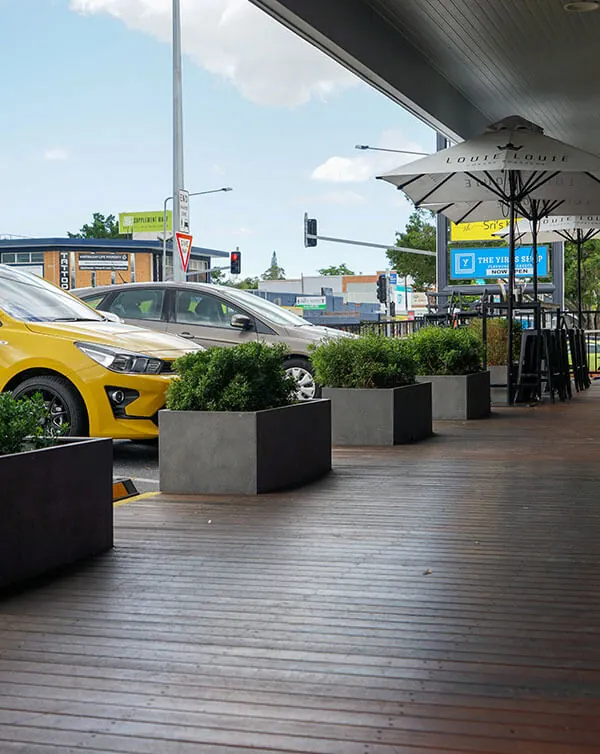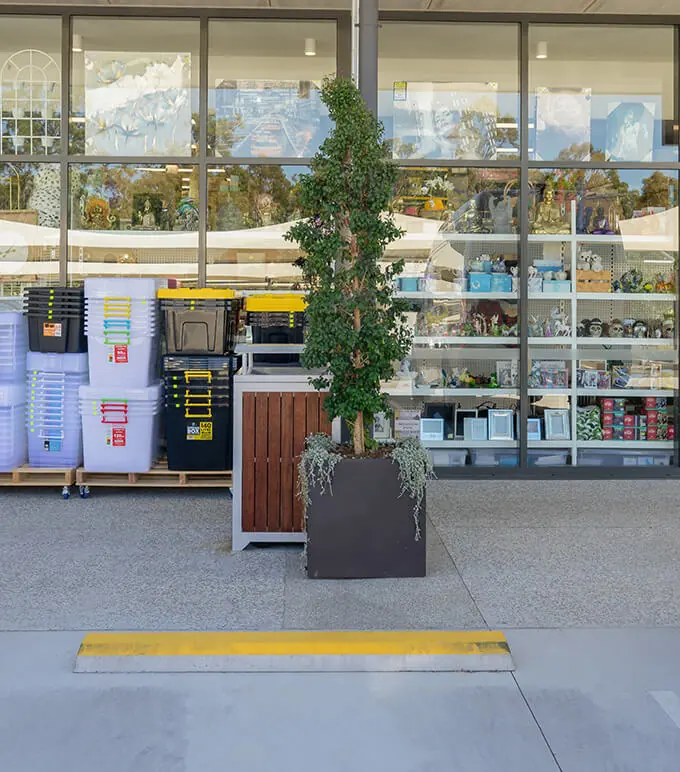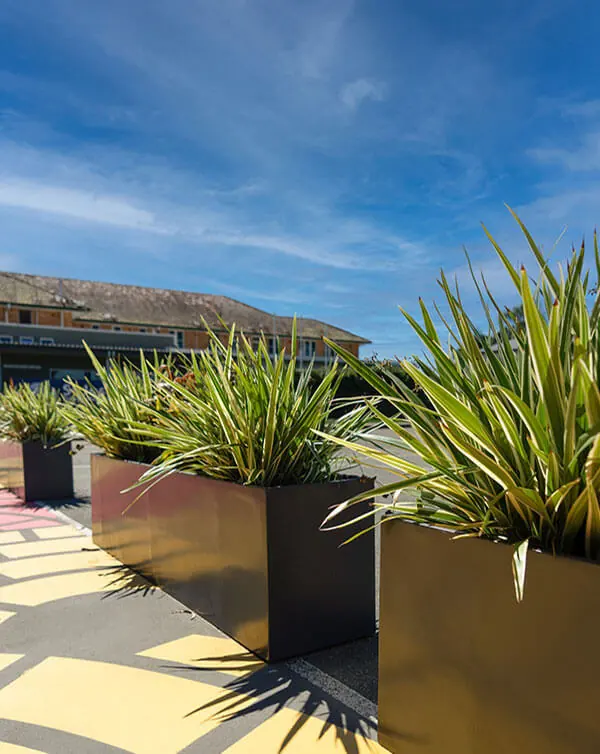In the realm of commercial design, the fusion of nature and architecture has become an art form, elevating spaces into vibrant and inviting environments. As designers and architects seek to integrate greenery into their projects seamlessly, the choice of planters takes center stage. Among the myriad considerations, the selection of materials holds paramount importance. It not only determines the planter’s durability and functionality but also contributes significantly to the overall aesthetic appeal.
In this article, we embark on a journey through the world of commercial planters, with a particular focus on the diverse materials that architects and designers can explore. We delve into the properties, benefits, and unique characteristics of these four materials that have emerged as popular choices for commercial planter boxes.
Concrete

Concrete planters are solid, resilient, and long-lasting. Sand, water, portland cement, and stone or gravel comprise most of the natural components that make up concrete. Each manufacturer’s proprietary formulae may additionally contain high-performance concrete additives to attain specific qualities. Compared to ordinary mixes, high-quality commercial concrete has a higher PSI (pounds per square inch) strength and greater density, resulting in reduced permeability.
These planters are frequently specified for security applications to offer barriers to safeguard people and property since they are difficult to move. Due to their weight, concrete planters also often incur higher shipping and handling expenses than other planters made of lighter materials.
Fiber Cement
Fiber cement is a composite material made of cellulose fiber or fiberglass mat, portland cement, sand, and water. Very few amounts of various chemical additives are utilized to give the specific qualities of fiber cement. These products differ from glass-reinforced concrete in that they are typically made by laminating a single layer of fiberglass with cement. In comparison, glass-reinforced concrete has fibers intermittently spread throughout the mixture to add strength to the mix.
Fiber cement planters are a good option for indoor use, smaller plantings and soil loads, and arenas not subject to freezing conditions. Compared to comparable-sized glass-reinforced concrete or cast stone goods, fiber cement planters offer significant cost savings.
Glass-Reinforced Concrete (also called Glass-Fiber Reinforced Concrete)

Glass reinforced concrete (GRC) is a composite made of Portland cement, fine aggregate, water, acrylic co-polymer, alkali-resistant glass fiber reinforcing, and additives. The use of glass fibers strengthens the concrete, giving it greater flexural (up to 4,000 PSI) and tensile strength than ordinary concrete. Due to its high density, glass-reinforced concrete has a low water vapor permeance (3) compared to other concrete products.
Glass-reinforced concrete planters are ideal for large-scale commercial projects that require substantial planters capable of withstanding heavy loads and environmental challenges.
Fiberglass

Fiberglass can be painted or gel-coated and comes in various stock and bespoke colors. For some applications, the glossy surface gel coating may not be ideal. The painted surfaces in public areas are readily scratched or scuffed and can need periodic touch-ups. Some producers will spray on texture that is not a part of the mold itself to reduce the tendency for scratching; the sprayed-on surface can flake and provide a less-than-authentic appearance.
Unlike heavyweight metal or stone containers, which cannot be moved or rearranged easily when needed, fiberglass’ moderate weight makes it the perfect material for commercial planter boxes. Fiberglass planters are also an excellent option for projects that have weight constraints, such as roof decks, or where there might be a problem with material handling.
Conclusion
A wide variety of materials can be used for commercial planter boxes, each with its own advantages and disadvantages. The material you choose will depend on the intended use of the planter, as well as your budget and aesthetic preferences. We hope this overview has helped you narrow your choices and find the perfect commercial planter for your needs.



0 Comments